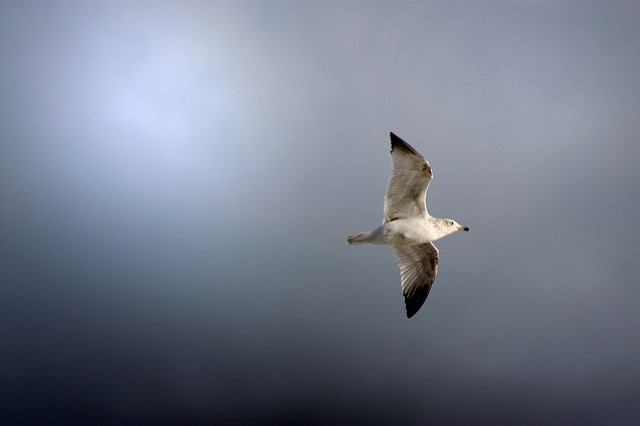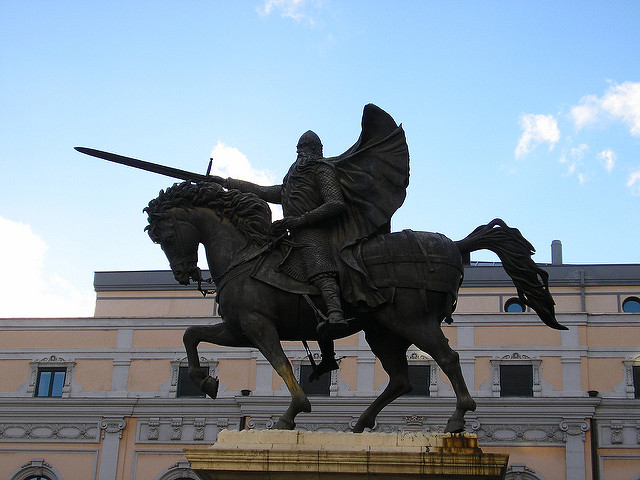Living in Interbeing
Article By Sangeeta Iyer
 In the journey of life as we grow in consciousness, we start to become aware of a certain truth that dawns on us as gently and as lovingly as the first rays of the rising Sun – that we are all ‘One Life’, deeply connected to each other in mystic and mysterious ways.
In the journey of life as we grow in consciousness, we start to become aware of a certain truth that dawns on us as gently and as lovingly as the first rays of the rising Sun – that we are all ‘One Life’, deeply connected to each other in mystic and mysterious ways.
James Cameron’s film Avatar brought this home in an impactful way. The underlying theme of the film is that all life is interconnected and the Na’vis, a sentient race with deep wisdom, know this and live by its tenets. They are guided by Eywa to protect and preserve the interconnected fabric of life extending across all forms. So when a band of humans attempts to raid Hometree, the clan’s gathering place, and mine the unobtanium under it, even Nature joins forces with the Na’vis to protect it.
Human traditions have used a variety of words, signs, symbols and other exoteric expressions to communicate the concept of our oneness. The ancient Vedic tradition refers to this inter-connectivity as pranajeeva; the Kybalion calls it the Law of Unity; the Mayans depicted it as the Tree of Life that unifies humanity with divinity; Nichiren Buddhism expresses it as the “principle of esho funi [which] means that life (sho) and its environment (e) are inseparable (funi). Funi means ‘two but not two’. Although we perceive things around us as separate from us, at a more subtle level of life there is no separation between ourselves and the environment.” (1)
Similarly, classical Greek philosophers including Pythagoras described the universe as a Macrobios – a single living entity comprising the entire universe as we know it, and of which each of us is a small but significant part. It is conceived of as an intelligent, all-encompassing organism having organs, each of which performs a role – its duty – to keep the whole universe well and ticking. And like an ocean in which there are many individual drops of water, this One Life manifests across billions of us, covering every living being whether it is a rock or a tree or an animal or a person…and goes beyond the visible forms to include the invisible ones as well.
From almost every culture, especially the ones that go back millennia in time, we learn about the essence of Life being interconnectivity. Although it may not be obvious at first, we really don’t have to search far and wide for evidence of this; we see it in the cosmos. We know that in the solar system, the gravitational force of the Sun holds the planets to their orbits in an eternal interconnectivity. Some even believe in the influence of various planets on our individual destinies and consult astrologers and horoscopes to identify the moments when their ruling planets are more favourable towards them. We know that the moon affects the ocean tides, menstrual cycles and our moods, and we’re aware of the multiple symbiotic relationships in Nature between living creatures and the elements – like the wind and pollination, rain clouds and rivers, and honey bees and their role in the delicate balancing of a fragile ecosystem. (2)
In some ways, we experience this interconnectivity ourselves. We could be Zulu, Japanese, Scandinavian, Brazilian or Indian and not understand each other’s languages – but we all share the same rainbow of emotions, desires and fears. No matter where we come from, we rise as one to hug our children, play with our pets, protect our homes, and wish all those we love to be safe from harm.
Beyond these exoteric similarities, there are finer aspects that unite us all at a deeper level. A melody performed by a symphony orchestra, of which each instrument, each musician, each note is strung together in perfect harmony, inspires us; it stirs our spirits and resonates with our sentiments. The same occurs at the execution of a just and noble cause; it unites us across race, gender and geography, to put our might behind what is right. Even more so, when there is an ideal that brings people together across every form of separation – like the search for wisdom, for ‘the Truth’ that is the essence of life itself, and which inspires us to be the best of our potential. We engage with it collectively surpassing individual identities because when the stimulus is from a higher realm, we respond from our higher selves as well.
Everything we think, say, or do, impacts everything else.
All of us together form the warp and weft of the fabric of life; everything we think, say, or do affects our surroundings. Vietnamese Zen master Thich Nhat Hanh has written about the concept of Interbeing, which he expresses as Tiep Hien, the Unity of the Mind and the World. (3)
Tiep means ‘to tie two strings together to make a longer string’. It suggests the idea of the continuous process of aligning oneself to the collective. Perhaps this resonates with Madame Blavatsky’s urging, “Keep the link unbroken.”
Hien means ‘to realize, making it here and now’; not to dwell in the world of doctrines but to bring those insights into real life, in all the three dimensions of our actions: body, speech and mind. Thoughts and words are actions too, capable of causing ripples in the world around us.
The Butterfly Effect, a term coined by Edward Lorenz, says that “small causes can have large effects.” (4) It offers the “metaphorical example of the path of a hurricane being influenced by the flapping of the wings of a distant butterfly several weeks earlier.” Similarly, even a mental image, a thought, can have an impact somewhere else in the world. We need to be aware that the seeds of violence are sown in our minds. It does not even have to be a murderous thought. Simply a bubble of resentment against a domineering boss, a silent slight against a critical parent, or a wish for the failure of a ruthless competitor are all forms of mental violence which, in the astral realm, have already struck the other person – and ourselves, because, after all we’re all interconnected. Could it be that the mind is far more powerful than we think? To quote John Milton’s Paradise Lost, “The mind is its own place, and in itself can make a heaven of hell, a hell of heaven.”
Evidently, everything we do affects the entire web of interconnectivity – for better or worse. But we have the choice of what we contribute to this collective. Do we offer the best of our human potential, or do we charge it with materialism and separation? This is the inner battle to fight every day, between our lesser self and our higher one; between our inner Pandavas and our Kauravas; our virtues and our vices. Do we choose to stand aside from the symphony of life and cause disjointed noise? Or do we bring out our best, despite the effort and discipline involved, and contribute to the harmony of the celestial music?
Perhaps this is the choice made by Jake Sully, the protagonist of Avatar. As the human who fell in love with Neytiri (the Na’vi princess who introduced him to the concept of all life being connected as a single collective entity), he at first felt awe at the largeness of it, then a growing respect and finally chose to live at Pandora, transformed in spirit into a Na’vi himself.
If we are mindful, we can see how to live in unity.
Undoubtedly, there are many challenges that come in the way, as one takes steps to align oneself to the Interbeing. But most of the obstructions are within us and completely in our control. With incisive insight, Hanh shows us exactly where the barriers to interconnectivity are, with their roots entwined largely in anger, desire, apathy to the suffering of others, lack of courage and selfishness.
“Don’t be bound to any doctrine or theory, not even Buddhist ones.” (3)
Aligning with any one particular ideology only makes us bigoted and turns us against each other. Instead, he suggests that we use spiritual teachings as guidelines for our own investigation, to arrive at our own intuitive wisdom; an inner reality common to all life. Hence it is imperative that education be imparted as a comparative study of cultures and traditions from around the world. In addition it must also comprise various genres such as the arts and the sciences, as a means to pursuing the unifying essence of wisdom, beyond the seeming plurality and differences.
“Being too attached to our own views can be a barrier to real insight.” (3)
When we believe that we know everything, it keeps us distant from each other and prevents us from learning anything new. Such an attitude can also prevent us from connecting with the universe. For instance, “When we watch a sunset, we can feel its glory…but a scientist will tell us that the Sun already set eight minutes ago – it takes us that long to see it. If we cling to that knowledge, we lose the opportunity to advance in our understanding of the moment.” (3)
“Don’t maintain anger or hatred. Learn to penetrate them and transform them when they are seeds in your consciousness.” (3)
Most often, it is not even the other person’s obstinacy that angers us; it is our own inability to make them see our point of view – which we believe is the right one! Can we see it as our own failing to effectively express our view and persuade someone else to change theirs? Or even accept that it is their right to do things their own way?
“Don’t utter words of discord. Reconciliation is an art requiring us to understand both sides of a conflict. To reconcile is not to judge by standing outside the conflict, it is to take some responsibility for the existence of the conflict, make every effort to understand the suffering of both sides, and communicate to each side the suffering experienced by the other side and offer some resolution based on an ideal common to both.” (3)
“Don’t live with a vocation that is harmful to humans or Nature. Livelihood is hard to find; still, if our work entails harming a life, we should try our best to find another job.” (3)
We are so deeply interconnected, that in some cases, our karma is collective, too. For instance, when an agricultural entrepreneur uses harmful pesticides to maximize profits and we buy that pesticide-laden food, it may be because we refuse to pay more for organic food. What goes around comes around.
Another important way to contribute to the fabric of interconnectivity is not to turn a blind eye to suffering among our fellow-beings. The Lotus Sutra says, “Look at other beings with the eyes of compassion…compassion is the sweet water that springs forth from the source of Understanding. To practice looking deeply is the basic medicine for anger and hatred.” (3)
However, being compassionate does not mean tolerating injustice as justification for pacifism. As we know from Mahatma Gandhi’s stellar example, such indifference is not a virtue – it is a weakness. So rather than stand by and watch innocent people become victims, we must stand up for those who can’t stand up for themselves. Living in Interbeing is also responsibility.
Why we need to inter-be
Knowing all this, as we do from so many different sources, why is it still difficult to realize and actually put it into practice? And why is it so important to rise above differences to do what’s right? Perhaps because this is the true nature of the human spirit – to engage in the daily battle of the Kurukshetra, challenge one’s lower self and emerge victorious as the one who lives by a higher code of conduct to realize the One Life of which he is a part, and help others do the same.
To what end, one might ask…what is the purpose of living in Interbeing? The Buddha might suggest it is to dispel the illusion of separation; the greatest illusion of all, and to identify with the Oneness. It is only when we recognize this truth and live by it that we can begin to make the world a better place. Hanh quotes the Pali canon: Dittha dhamma sukha vihari – joy dwells where there is Dharma; where you participate actively in the web of interconnectivity and discover true joy in the process.
“That which is not good for the beehive cannot be good for the bee,” said Marcus Aurelius. (6) And yet, how often do we bear that in mind while making our choices? The film ‘Airlift’ shows the dilemma very well, when Ranjit Katyal (played by Akshay Kumar) is transformed from a man who usually thinks only about his own interests and would have flown his family away from war-torn Kuwait without a backward glance, to one who ensures that every expatriate Indian is safely airlifted out of the war zone before he and his family fly out. For the first time, he feels connected to everyone else and puts others first.
We are not separate; we are not alone; and we are not self-sufficient by ourselves. We are but a drop in the ocean called Life. And we can become much larger in spirit by joining in its flow. In the words of the former President of India, Dr APJ Abdul Kalam:
“Where there is righteousness in the heart, there is beauty in the character.
Where there is beauty in the character, there is harmony in the home.
Where there’s harmony in the home, there is order in the nation.
Where there’s order in the nation, there is peace in the world.” (7)
The only way to truly be is to inter-be.
Image Credits: By Ed Ivanushkin | Flickr | CC BY-SA 2.0
The entity posting this article assumes the responsibility that images used in this article have the requisite permissionsImage References
By Ed Ivanushkin | Flickr | CC BY-SA 2.0
Permissions required for the publishing of this article have been obtained
Article References
Bibliography (1) Sogo Gakkai International. SGI Quarterly.




Love the way you have woven a fabric of understanding from various sources. It amply drives home the point to inter be.